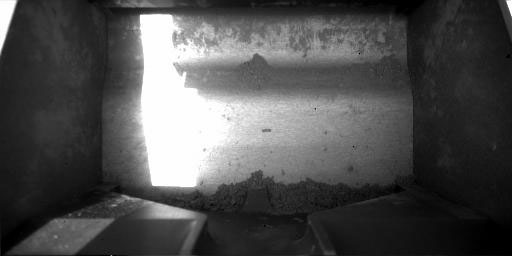Mars Lander Successfully Collects Ice Sample

NASA's Phoenix Mars Lander has successfully drilled into the rock-hard ice layer below the Martian surface and collected the frozen shavings in its robotic arm scoop, NASA said on Wednesday.
The ice is too hard for Phoenix's scoop to dig into it, so the craft used a powered rasp on the back of the scoop to drill into the ice, loosen the material and kick it up into the scoop.
Images and data sent from Phoenix back to Earth on Wednesday confirmed that the material was in the scoop and showed that it had changed slightly during the hours after it was collected.
When ice is exposed to the air on Mars, it starts to sublimate, or convert into water vapor (whereas ice exposed to air on Earth tends to melt).
The rasp made two separate holes in the trench informally named Snow White, which Phoenix enlarged over the weekend and early in the week.
This ice collection trial was a test of the rasping method of gathering a sample. The same method will be used in the coming days to collect a sample for Phoenix's Thermal and Evolved-Gas Analyzer, which bakes samples in its tiny ovens and analyzes the vapors they give off to determine the composition of the sample.
"This was a trial that went really well," said Richard Morris, a Phoenix science team member from NASA's Johnson Space Center in Houston. "While the putative ice sublimed out of the shavings over several hours, this shows us there will be a good chance ice will remain in a sample for delivery" to Phoenix's ovens.
Get the Space.com Newsletter
Breaking space news, the latest updates on rocket launches, skywatching events and more!
Mission scientists will command Phoenix to continue scraping and enlarging the Snow White trench and conduct another series of rasp tests on Wednesday.
Join our Space Forums to keep talking space on the latest missions, night sky and more! And if you have a news tip, correction or comment, let us know at: community@space.com.

Andrea Thompson is an associate editor at Scientific American, where she covers sustainability, energy and the environment. Prior to that, she was a senior writer covering climate science at Climate Central and a reporter and editor at Live Science, where she primarily covered Earth science and the environment. She holds a graduate degree in science health and environmental reporting from New York University, as well as a bachelor of science and and masters of science in atmospheric chemistry from the Georgia Institute of Technology.









